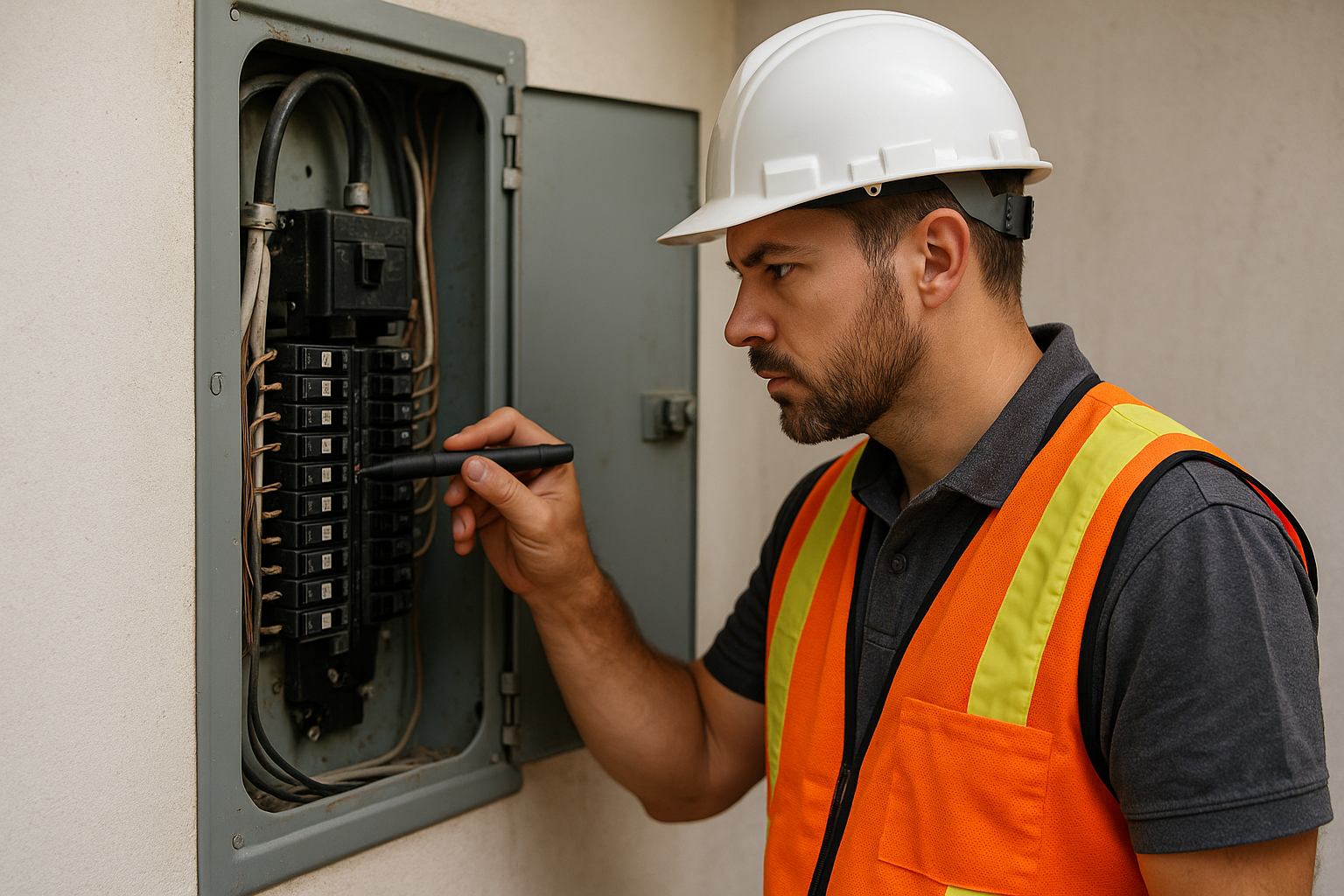Old electrical panels don’t keep up with modern living. Most homes in Flagstaff still rely on panels built for a time when power needs were simple. Plug in a few new appliances, and the system starts to show its age. Outdated panels can’t handle the load, and that’s when things go wrong. Tripped breakers, dead outlets, and real fire risks can occur. Inspections aren’t about checking a list; they’re about finding what’s actually wrong before it turns into a bigger problem.

Flagstaff’s mountain climate throws extra challenges at every electrical system. At 7,000 feet, temperature swings hit hard. Winter brings deep freezes. Summer storms roll in with lightning and sudden downpours. Panels that work fine at sea level can struggle here. Connections loosen. Moisture sneaks in. Corrosion takes hold. Inspections in Flagstaff need a sharper eye and a deeper understanding of what these conditions do to wires, breakers, and every connection point.
What Inspectors Check First
Every inspection starts with the basics, but a real evaluation goes further. Here’s what gets attention right away:
- Amperage and load: Is the panel sized for the way you actually live? Too small, and you’ll see flickering lights and tripped breakers. Too big, and you’re wasting money on upgrades you don’t need.
- Panel brand and model: Certain names spell trouble. Federal Pacific, Zinsco, and some Challenger panels have a track record of failures and fire risk. These panels don’t just age. They become hazards.
- Wiring: Inspectors look for aluminum wiring, especially in homes from the late 60s and early 70s. Aluminum expands and contracts more than copper. Connections loosen. Heat builds up. Fires start where you can’t see them.
- Grounding: A missing or broken ground wire leaves your home exposed. Lightning strikes, power surges, or even a faulty appliance can send current where it doesn’t belong.
- Breaker function: Breakers that don’t trip on overload are useless. Inspectors test them, looking for signs of wear, rust, or sticking mechanisms.
- Surge protection: Flagstaff storms hit hard. Without surge protection, sensitive electronics and appliances get fried in a flash.
Every finding gets documented. Photos, notes, and clear explanations build a record you can use. This isn’t just paperwork. It’s proof of what’s working and what’s not. When a problem shows up, you see exactly where it is and what needs to happen next. That’s how you avoid dangerous electrical hazards and expensive surprises.
Panels That Raise Immediate Concerns
Some panels get flagged the moment the cover comes off. Federal Pacific and Zinsco units show up in older Flagstaff homes. These panels have breakers that stick, fail to trip, or even melt. Challenger panels from certain years have similar issues. When these brands appear, replacement isn’t optional. It’s urgent.
Aluminum wiring stands out, too. Homes built between 1965 and 1973 often used it to save money. The problem? Aluminum doesn’t hold connections like copper. It oxidizes, loosens, and overheats. Inspectors look for special connectors and signs of past repairs. If they find scorched insulation or melted wire ends, the risk is real.
Other warning signs jump out:
- Double-tapped breakers: Two wires jammed into a single breaker. This isn’t safe. It’s a shortcut that leads to overheating and failure.
- Loose connections: Wires that wiggle or pull free. These spots get hot, then burn.
- Water damage: Rust, corrosion, or stains inside the panel. Water and electricity never mix. Even a small leak can destroy a panel from the inside out. Water damage always gets flagged.
- Missing labels: No way to know which breaker controls what. In an emergency, you’re guessing.
- Wrong wire gauge: Thin wires on heavy circuits. These wires overheat and fail.
Code Violations That Show Up Again and Again
Flagstaff homes break code in predictable ways. Overloaded circuits top the list. Too many outlets or lights on a single breaker push the system past its limits. Grounding gets ignored or done wrong, especially in older homes. GFCI protection, required in kitchens, bathrooms, and outside, often goes missing. These aren’t minor details. They’re the difference between a safe home and a fire risk.
DIY electrical work causes the worst problems. Homeowners add circuits, swap outlets, or move breakers without permits or real knowledge. Inspectors find wires spliced with tape, missing junction boxes, and breakers that don’t match the panel. These shortcuts don’t just break code. They create real danger. Our certified inspectors spot these issues fast, using experience and a sharp eye for details that others miss.
What Happens After the Inspection
When an inspection turns up problems, the next steps matter. Quick fixes don’t cut it. Qualified electricians handle repairs, upgrades, and replacements. They know the codes, the right materials, and the safest methods. Reports from home inspections lay out every issue, with photos and clear notes. Homeowners use these reports to plan repairs, budget for upgrades, and make smart decisions about their property.
Older homes in Flagstaff often need more than a breaker swap. Full electrical system modernization brings panels, wiring, and protection up to current standards. This isn’t just about passing inspection. It’s about living safely and keeping your investment secure.
Schedule Your Electrical Inspection Today
Aspen Home Inspections provides thorough electrical evaluations that keep Flagstaff homes safe. Call us at 928-600-7761 or schedule your inspection online to get a complete assessment of your electrical system.


